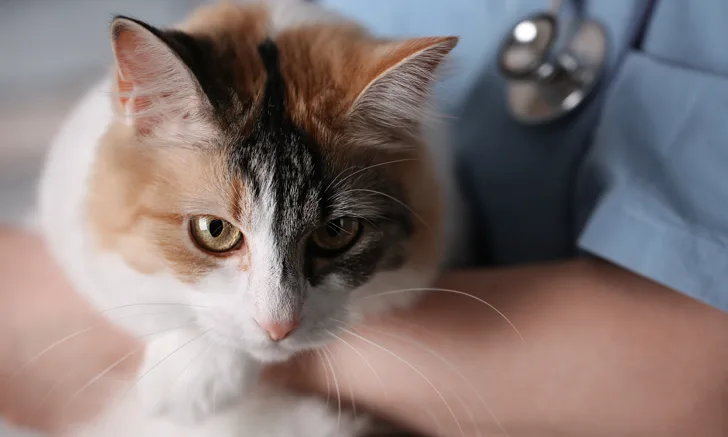The Gentling Effect on Cats
Meghan E. Herron, DVM, DACVB, Gigi’s, Canal Winchester, Ohio

In the Literature
Liu S, Paterson M, Camarri S, Murray L, Phillips CJC. The effects of the frequency and method of gentling on the behavior of cats in shelters. J Vet Behav. 2020;39:47-56.
The Research …
Cats often show signs of stress when away from the home. Stress-reduction techniques have been evaluated in both hospitalized and shelter cat populations. Practical means of reducing stress are needed to promote positive welfare, accelerate healing, and, in the case of shelter cats, improve adoption appeal. Gentling has historically been used to describe a combination of friendly interactions between humans and animals and may include long body strokes, brief head patting, soft speaking, and resting a hand on the animal.
This study investigated how specific aspects and durations of gentling affected behavior in cats. Two experiments focused on the behavior of cats housed in a shelter in Queensland, Australia. In the first experiment, 60 cats were exposed to single-direction, head-to-tail petting for three 2-minute sessions per day, one 6-minute session per day, or no sessions. Cats were further divided into groups that experienced soft, friendly speaking delivered during the petting session or no vocalizations. The second experiment included 15 cats and more closely examined the duration of petting to determine whether 3-, 6-, or 9-minute sessions once daily for 4 days resulted in greater changes in behavior.
Results showed that a quiet petting session of 6 minutes once daily led to cats being near the front of their cage, being on the floor (rather than on a perch), and showing less pawing at the walls. Cats exposed to one 6- or 9-minute daily session showed an increase in purring, eating, and drinking. Soft speaking during the gentling sessions appeared to negate these positive effects.
Positive effects were noted only in the presence of the handler conducting the petting sessions. Cats did not remain on the floor or near the front of the cage when a stranger approached to pet them, suggesting familiarity plays a major role in cat comfort.
… The Takeaways
Key pearls to put into practice:
Although gentling may not dramatically alter behaviors of shelter cats, there is potential to improve cat’s overall welfare and, therefore, overall health and well-being.
Hospitalized and boarded cats may benefit from a single 6- to 9-minute session of gentle petting per day, particularly if consistency of handlers is possible. When handling cats, keeping quiet appears to be more beneficial than using soft vocalizations.
Providing gentle handling and extended, purposeful interactions with cats may benefit patient welfare during hospitalization or boarding. This, in turn, may help cats engage in normal, healthy behaviors (eg, eating, drinking) and return to health more quickly.
You are reading 2-Minute Takeaways, a research summary resource presented by Clinician’s Brief. Clinician’s Brief does not conduct primary research.